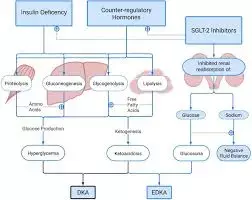- Home
- Medical news & Guidelines
- Anesthesiology
- Cardiology and CTVS
- Critical Care
- Dentistry
- Dermatology
- Diabetes and Endocrinology
- ENT
- Gastroenterology
- Medicine
- Nephrology
- Neurology
- Obstretics-Gynaecology
- Oncology
- Ophthalmology
- Orthopaedics
- Pediatrics-Neonatology
- Psychiatry
- Pulmonology
- Radiology
- Surgery
- Urology
- Laboratory Medicine
- Diet
- Nursing
- Paramedical
- Physiotherapy
- Health news
- Fact Check
- Bone Health Fact Check
- Brain Health Fact Check
- Cancer Related Fact Check
- Child Care Fact Check
- Dental and oral health fact check
- Diabetes and metabolic health fact check
- Diet and Nutrition Fact Check
- Eye and ENT Care Fact Check
- Fitness fact check
- Gut health fact check
- Heart health fact check
- Kidney health fact check
- Medical education fact check
- Men's health fact check
- Respiratory fact check
- Skin and hair care fact check
- Vaccine and Immunization fact check
- Women's health fact check
- AYUSH
- State News
- Andaman and Nicobar Islands
- Andhra Pradesh
- Arunachal Pradesh
- Assam
- Bihar
- Chandigarh
- Chattisgarh
- Dadra and Nagar Haveli
- Daman and Diu
- Delhi
- Goa
- Gujarat
- Haryana
- Himachal Pradesh
- Jammu & Kashmir
- Jharkhand
- Karnataka
- Kerala
- Ladakh
- Lakshadweep
- Madhya Pradesh
- Maharashtra
- Manipur
- Meghalaya
- Mizoram
- Nagaland
- Odisha
- Puducherry
- Punjab
- Rajasthan
- Sikkim
- Tamil Nadu
- Telangana
- Tripura
- Uttar Pradesh
- Uttrakhand
- West Bengal
- Medical Education
- Industry
SGLT2 Inhibitors use tied to Risk of Postoperative euglycemic ketoacidosis but Lower AKI and Mortality: JAMA

According to a new research Preoperative Use of SGLT2 inhibitors was associated with a modestly increased risk of postoperative euglycemic ketoacidosis (eKA), but also with reduced risks of acute kidney injury (AKI) and 30-day postoperative mortality.
Case reports and small retrospective studies have suggested that there is an increased risk of postoperative euglycemic ketoacidosis (eKA) and acute kidney injury (AKI) among patients using sodium-glucose cotransporter 2 inhibitors (SGLT2i) preoperatively. However, there has not been a representative assessment of the risks of these agents among patients undergoing surgery. A study was done to evaluate the risk of postoperative eKA, AKI, and mortality within 30 days after surgery among preoperative long-term SGLT2i users compared with nonusers. This is a multicenter, propensity-matched, retrospective case-control study from the Veterans Affairs Health Care System (VAHCS) National Registry performed from January 1, 2014, to December 31, 2022. Adult patients using SGLT2i preoperatively who underwent inpatient surgical procedures were compared with a 1:5 matched control group using propensity score matching, including the patient’s demographic characteristics, comorbidities, and surgical characteristics. Data analysis was performed from June 2023 to August 2024. Long-term use of SGLT2i, defined as having more than 3 fills of outpatient prescription or less than a 180-day gap of the last fill according to the VAHCS pharmacy registries. The primary outcome was the rate of postoperative eKA among SGLT2i users vs control patients. Secondary outcomes included postoperative AKI and 30-day mortality after surgery. Results Among 462 968 patients undergoing surgery, 7448 SGLT2i users (mean [SD] age, 67.7 [8.1] years; 7204 [96.7%] male) and 455 520 nonusers (mean [SD] age, 65.8 [11.0] years; 424 785 [93.3%] male) were identified. After propensity score matching, 7439 patients were identified as SGLT2i users and compared with 33 489 control patients. SGLT2i use was associated with an increased risk of eKA (odds ratio [OR], 1.11; 95% CI, 1.05-1.17) but reduced risks of perioperative AKI (OR, 0.69; 95% CI, 0.62-0.78) and 30-day mortality (OR, 0.70; 95% CI, 0.55-0.88). The mortality rate 30 days after surgery was 1.1% among SGLT2i users vs 1.6% among control patients. The median hospital length of stay among the patients presenting with eKA increased by 3 days (median [IQR], 6 [3-10] days for those with eKA vs 3 [2-6] days for those without eKA). Patients treated with SGLT2i had a small but significantly higher risk of postoperative eKA but lower risks of postoperative AKI and 30-day mortality.
Reference:
Tallarico RT, Jing B, Lu K, et al. Postoperative Outcomes Among Sodium-Glucose Cotransporter 2 Inhibitor Users. JAMA Surg. Published online April 30, 2025. doi:10.1001/jamasurg.2025.0940
Keywords:
SGLT2, Inhibitors, use, tied, Risk, Postoperative, euglycemic, ketoacidosis, Lower, AKI, Mortality, JAMA , Tallarico RT, Jing B, Lu
Dr. Shravani Dali has completed her BDS from Pravara institute of medical sciences, loni. Following which she extensively worked in the healthcare sector for 2+ years. She has been actively involved in writing blogs in field of health and wellness. Currently she is pursuing her Masters of public health-health administration from Tata institute of social sciences. She can be contacted at editorial@medicaldialogues.in.


